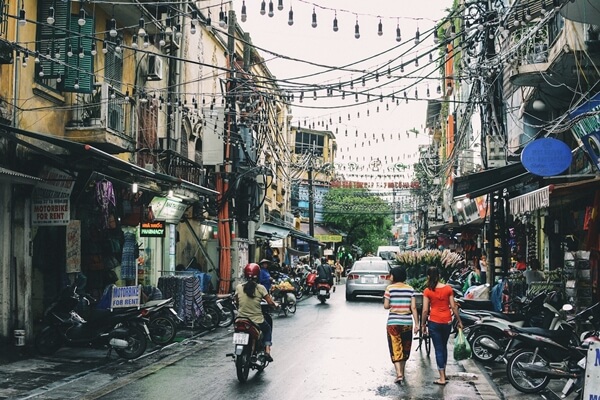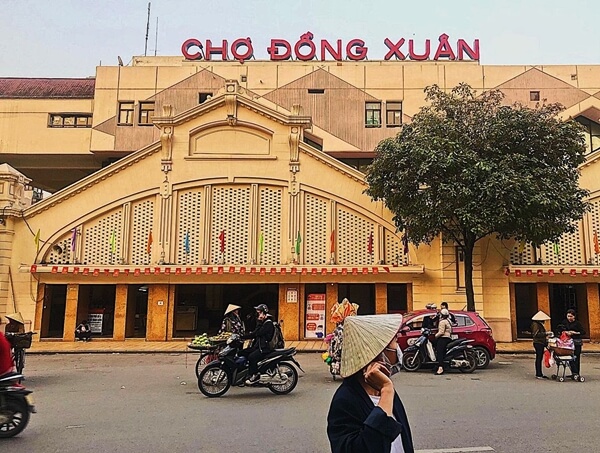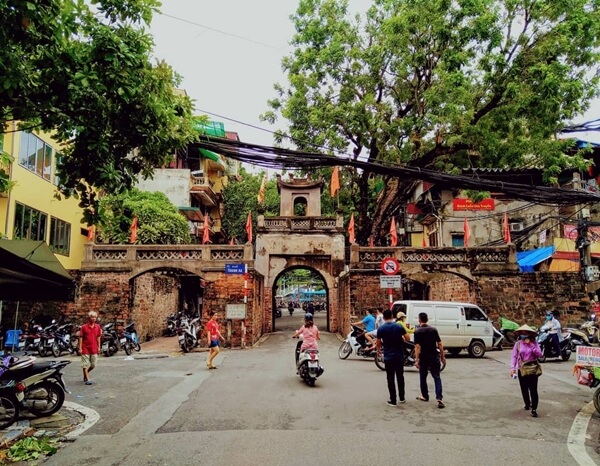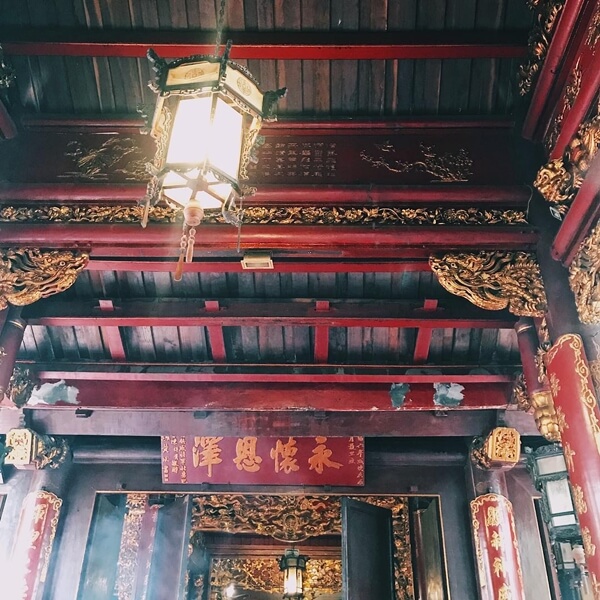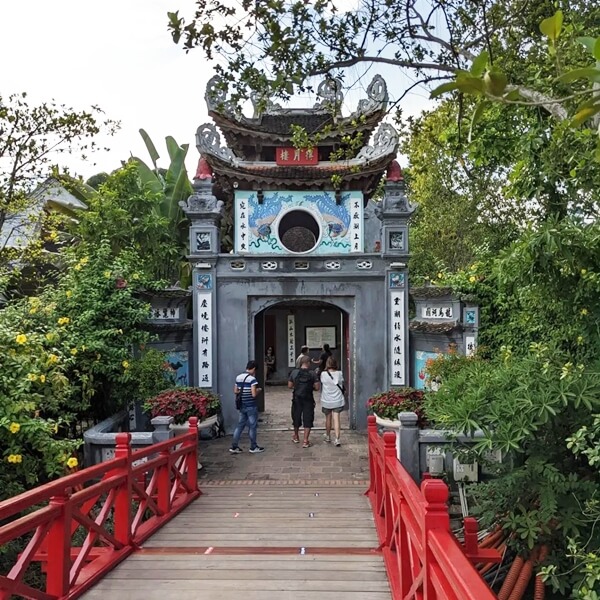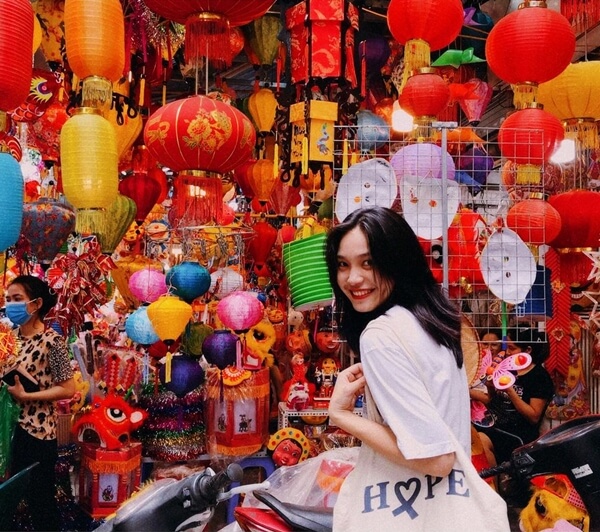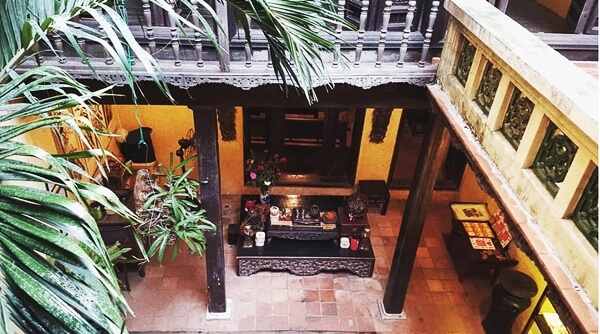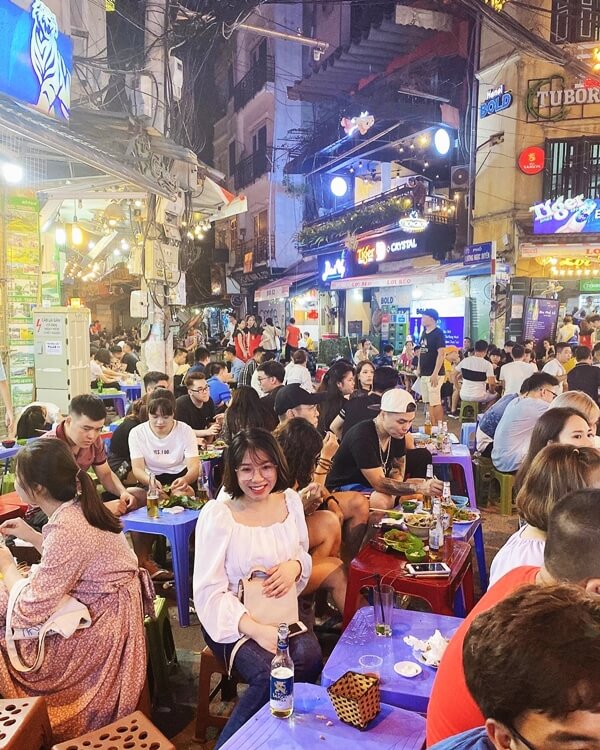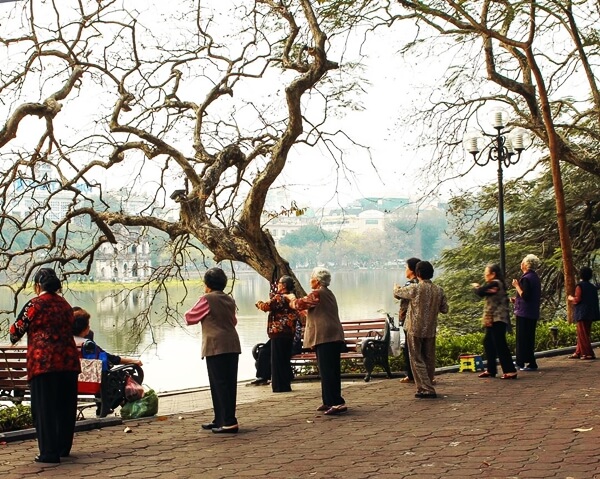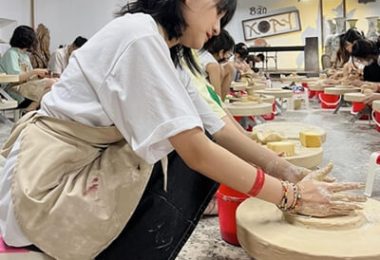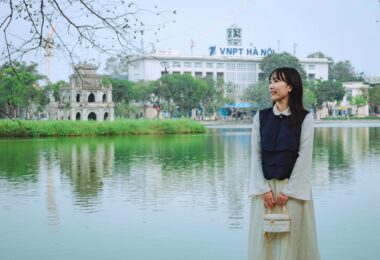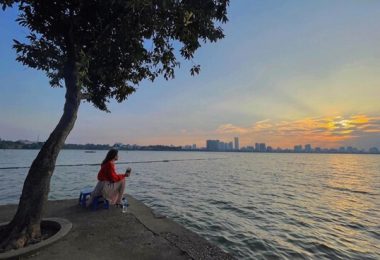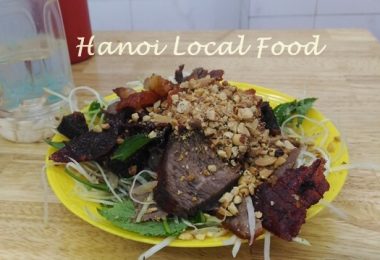Nestled in the heart of Hanoi’s bustling capital, the Old Quarter is a peaceful pocket of ancient charm. Its timeless beauty lingers in the minds of travelers long after they leave.
Also known as 36 Pho Phuong – the 36 streets – this area has been home to generations of Hanoians and their bustling trade. Each street traditionally specialized in a single craft or product, creating a vibrant maze of commerce and culture.
Let’s begin exploring this captivating part of the city.
1. General Information
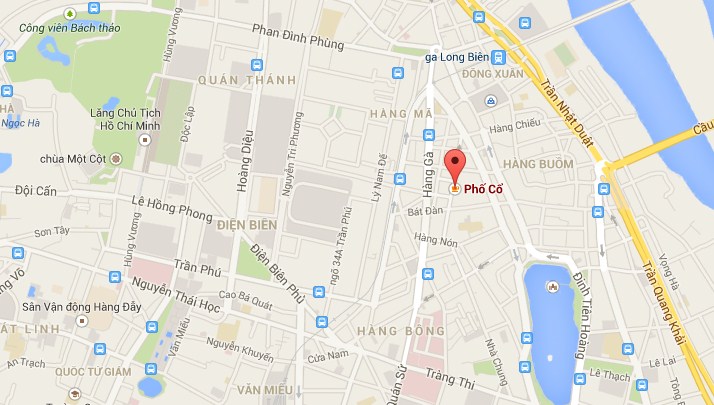
The boundaries of the Old Quarter are defined by Tran Nhat Duat and Tran Quang Khai streets to the east, Phung Hung street to the west, Hang Thung – Hang Gai, Hang Bong, and Cau Go to the south, and Hang Dau to the north.
Though compact—just 100 hectares with 10 wards and 76 streets—the area feels like a step back in time. Streets like Hang Bong sell cotton blankets, Hang Ma is filled with votive items, and Hang Quat is known for traditional costumes and performance tools.
This district was once the vibrant trade hub of Thang Long, the capital during the Ly–Tran dynasties of the 11th century. The architecture, with its yellow-painted facades, sloped tile roofs, and narrow tube houses, preserves the classical style that defined a bygone era.
Today, Hanoi’s Old Quarter is not just a place—it’s a living museum, cherished and protected by the city.
2. Attractions to Visit in the Old Quarter
As one of Hanoi’s most visited destinations, the Old Quarter offers a charm that’s hard to find elsewhere. Start your journey from Hoan Kiem Lake, then wander into the maze of ancient streets.
2.1. Dong Xuan Market
Mention markets in Hanoi, and Dong Xuan instantly comes to mind. Initially built in 1804 on the banks of the To Lich River, the market was relocated in 1889 by the French to its current site in Dong Xuan Ward—hence the name.
After a major fire in 1995, it was rebuilt into a sprawling 14,000m² complex with over 2,000 stalls. Today, Dong Xuan remains the largest market in Hanoi and a favorite stop for tourists looking to experience local life.
2.2. O Quan Chuong Gate
Located at the junction of Hang Chieu and Dao Duy Tu streets, O Quan Chuong stands as a symbol of Hanoi’s resilience. Built in 1749, just 80 meters from the Red River, it was once the gateway for bustling trade between major markets.
The gate features two stories, stands about 3 meters tall, and has three arched entrances. Its sturdy bricks—similar to those used in the Temple of Literature—have helped it endure for centuries.
Nearby: Don’t miss Hoa Lo Prison, just a short distance away.
2.3. Bach Ma Temple
Located at 76 Hang Buom Street, Bach Ma Temple is the oldest in Hanoi, dating back to the late 9th century. It’s dedicated to the guardian deities Long Do, Bach Ma Dai Vuong, and Thang Long Thanh Hoang.
In the past, even kings would visit the temple during the Lunar New Year to pray for peace and prosperity. Today, it remains a revered spiritual site for many Hanoians.
2.4. Ngoc Son Temple
Built in 1841, Ngoc Son Temple honors Van De Quan (God of Fortune), the national hero Tran Quoc Tuan, the Buddhas, and the Holy Mother Tam Hoa.
The temple features Northern Vietnamese architecture, characterized by its eight-square roofs, two floors, eight supporting columns, and three interconnected halls. It’s especially busy on the first and full moon days of each month.
Don’t miss a photo with The Huc Bridge, known for its striking red color. When entering the temple, use the side doors, avoid photographing the interior, and never point at the statues.
2.5. Hang Ma Street
Just 700 meters from Hoan Kiem Lake and 1km from Dong Xuan Market, Hang Ma Street intersects with Hang Duong, Hang Chieu, Hang Ngang, and Phung Hung. It’s long been known for selling paper goods, votive items, and festive decorations.
Today, it’s a lively shopping spot, especially during holidays. On Tet, the street transforms into a sea of red lanterns, lights, and peach blossoms—an Instagram favorite for locals and visitors alike.
2.6. Ma May Ancient House
At 87 Ma May Street, just north of Hoan Kiem Lake, sits one of Hanoi’s most iconic old houses. Built in the 19th century, the 150m² home was restored in 1998 and recognized as a national heritage site in 2004.
Its architecture reflects the traditional lifestyle of old Hanoi. Today, it welcomes visitors curious about the city’s past. In the evening, you can even catch a Ca Tru performance—a unique form of Northern Vietnamese traditional music.
2.7 Ta Hien Beer Street
Ta Hien Beer Street, just 270 meters long, is Hanoi’s nightlife hotspot—a place that never sleeps. Every evening, it comes alive with crowds of locals and tourists enjoying the vibrant atmosphere.
With its blend of modern energy and old-world charm, the street glows under colorful lights, lined with buzzing beer shops. It’s the perfect spot to dive into Hanoi’s lively evening scene.
2.8. Hoan Kiem Lake
Hoan Kiem Lake, or Sword Lake, is the soul of Hanoi. This freshwater lake in the city center has become a symbol of the capital. On weekends, the streets around the lake turn into a walking zone, filled with street performances and local life.
Located at the crossroads of Hang Dao, Hang Ngang, and Luong Van Can Streets, the 12-hectare lake is shallow, with depths ranging from 1 to 1.4 meters. In its center sits Turtle Island and the iconic Turtle Tower, both steeped in legend.
After a stroll, catch a traditional Water Puppet Show nearby. This unique art form depicts rural Vietnamese life and continues to amaze travelers with its skillful storytelling in water. Showtimes include 13:45, 15:00, 16:10, 17:20, 18:30, 20:00, 21:15, and Sunday at 9:30 AM.
Another cultural gem to explore: Bat Trang Pottery Village.
3. Getting Around
From anywhere in Hanoi, reaching the Old Quarter is easy—by motorbike, car, taxi, or bus. Many travelers choose to stay in this area, surrounded by history and charm.
To explore the narrow streets, walking or hiring a motorbike with a driver is ideal. If you’re driving, park near the lake and wander on foot. And don’t forget to sample Hanoi’s delicious street food to complete your journey.

